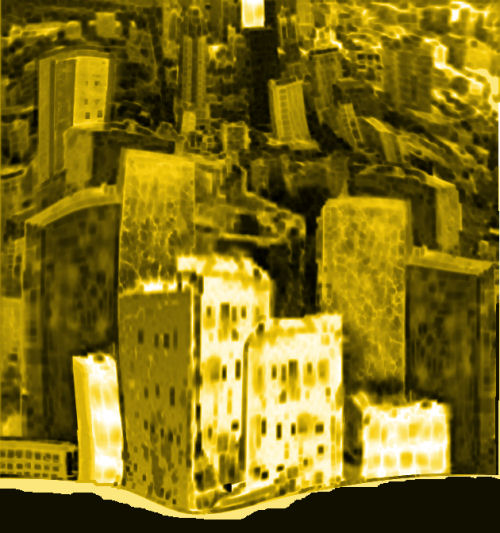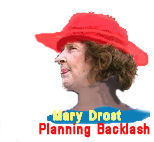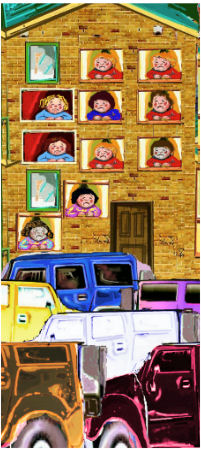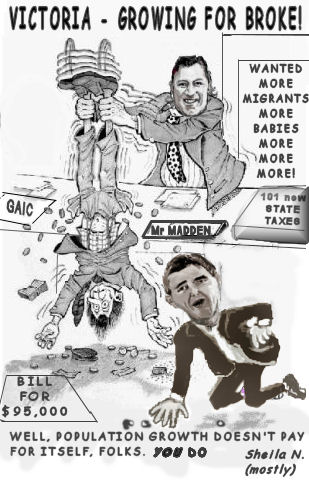 The following article is based on a submission to George Seitz, Committee Chair of the Outer Suburban/Interface Services and Development Committee, Victoria, and was submitted on 19th October by Protectors of Public Lands. Headings inserted by Candobetter editor are preceded with “(Ed.)” Illustrations are from candobetter.org . The rest of the article, unless otherwise marked, is the original text.
The following article is based on a submission to George Seitz, Committee Chair of the Outer Suburban/Interface Services and Development Committee, Victoria, and was submitted on 19th October by Protectors of Public Lands. Headings inserted by Candobetter editor are preceded with “(Ed.)” Illustrations are from candobetter.org . The rest of the article, unless otherwise marked, is the original text.
Submission to Parliamentary Outer Suburban Interface/Services and Development Committee Inquiring into the Impact of State Government Decision to Change the Urban Growth Boundary
...
Introduction:
I am making a submission on behalf of Protectors of Public Lands Victoria Inc. (PPL VIC.) I should by way of introduction mention that our organisation, established in 2004, is a State wide coalition of over 80 environment, heritage, resident and parks groups across Victoria. We are dedicated to keeping public lands in public hands and to protecting and conserving iconic heritage places and environmental sites of significance.
Summary of Grounds of Opposition: In addressing the terms of reference we are considering “The impact of the State Government’s decision to change the urban growth boundary on landholders and the environment…” PPL VIC draws the Committee’s attention to the failure of the State Government in strategic urban planning over the last 10 years and in encouraging uncontrolled entry of settlers to Victoria without examining sustainable population levels. We object to creation of growth areas outside the existing boundaries as extending and creating urban sprawl; alienation of established Green Wedges; destruction of the environment and wildlife; loss of biodiversity; creation of “dormitory” settlements without infrastructure and services; likely social alienation of youth; loss of arable land for food production; increasing car dependency; worsening Victoria’s greenhouse gas emissions and contributing to climate change with land clearance, unsustainable housing and reliance on road transport; plus knowingly approving the building of new settlements in fire-prone areas. Additionally we deplore the imposition of a vendor tax on landowners in order to fund the infrastructure of the new settlements and the impetus given to land speculation and “land banking.” PPL VIC supports the submissions made by our colleagues from the “Green Wedges Coalition” and “Taxed Out”.
The grounds of our submission are as follows:
New Growth Areas = Future Urban Sprawl = Major Failure of Strategic Urban Planning:
The Bracks Government guaranteed in 2002 that, under a Labor Government there would be no changes or amendments to the Urban Boundary or to the Green Wedges corridors. The fact that there are now radical changes represents a serious breach of faith with the electorate by the Brumby Government. Melbourne 2030 was considered to be the blue print for future development and was expressly intended to contain future urban sprawl; to prevent urban incursions into rural land; to concentrate residential growth into areas served by high capacity public transport; and protect sensitive environmental zones around the city. Many planners have pronounced Melbourne 2030 dead in view of recent radical departures from the plan.
Before the 2002 election the State Government announced protection of Melbourne’s green wedges from subdivision and inappropriate urban uses. There was bipartisan support - the Opposition supported the green wedge protection legislation when it passed through the Legislative Assembly before the 2002 election.
(Ed.) Path to unsustainable growth paved with broken promises
The Government has additionally broken a 2005 promise when 11,500 hectares was excised from Green Wedges land that there would be no further changes until 2030. The community accepted the excision on this proviso. Apparently, the Minister for Planning gave a number of assurances right up to the announcement of the review of the Urban Growth Boundary that there would be changes to Green Wedges. .
The State Government announced its review of the Urban Growth Boundary in December 2008 when it released the Melbourne @5 million, an update to Melbourne 2030: Planning for Sustainable Development. This signalled the State Government’s plans to open up at least 23,000 hectares – including land in Green Wedges areas - for urban expansion to allow for construction of 600,000 houses with 284, 000 of these to be located in growth areas. It was only apparently belatedly realised by Government advisers and planners that Victoria needs to accommodate another 1 million people before 2025. By 2036 Melbourne is predicted to have a further 1.8 million, twice the number forecast by Melbourne 2030 planners. By anyone’s reckoning failure to predict this massive population boom is a monumental blunder in strategic planning (See also comment under population)
(Ed.) Incremental excisions of natural amenity, wildlife habitat and agricultural land
We can see no improvements under the current Delivering Melbourne’s Newest Sustainable Communities (DMNSC) report on the Urban Growth Boundary Review released in June 2009. PPL VIC was alarmed to see that according to the Green Wedges Coalition the report proposes to excise a further 41,663 hectares from Melbourne’s Green Wedges, nearly twice the area estimated to have been needed in last December’s Melbourne @ 5 Million report.
Minister Madden has added to proposals by announcing on 6 October 2009 that new “Precinct Structure Plans guidelines” were to be added, a kind of overlay for suburbs of 3,000 dwellings or more. These guidelines were drawn up to try to ensure developments avoided becoming isolated, so called “dormitory” suburbs - places where there is nothing to do but sleep. The Age article of 11 October 2009 “Sprawl of the wild” by Melissa Fyfe says “The Victorian Government has discovered sustainable communities. Pity it’s 10 years late.”
On 16 October 2009 Planning Minister Madden announced the draft legislation for Growth Areas Infrastructure Contribution Bill. We have only been given time to make comments until 2 November 2009. (It is not known if the legislation will be introduced to Parliament before this Committee has reported.) The problem is that arrangement to levy the GAIC have been changed or significantly amended. Michael Hocking of Taxed Out says on his website:
“This is taxing the landowner by stealth. The tax is still applied at a flat rate regardless of the sale price yet the land may be twenty years from development. A property owner needing to sell in the short-term will find it virtually impossible to find a purchaser who is prepared to accept a GAIC liability when he sells, meaning the only likely purchaser is a developer not interested in the value of the dwelling and not interested in paying development prices for land that won't be developed for decades.
The Growth Areas Authority assumptions relating to value uplift remain fundamentally flawed and Taxed Out Inc. intends to expose these issues at the Parliamentary Inquiry…In many respects this situation is worse than that originally proposed.”
PPL VIC deplores the fact that the State Government appears to have attempted to mislead affected landowners. We also point out that this debacle over changes to the GAIC further illustrates that our contention that this is planning on the run.
What is a Sustainable Population for Victoria?
The whole rationale for extending the Urban Growth Boundary is to accommodate the unprecedented flood of population to Victoria. It is instructional to Google the “Population Clock” of the Bureau of Statistics. This shows the resident population of Australia which increases by one person every 1 minute and 12 seconds. This projection is based on the estimated resident population at 31 March 2009 and assumes growth since then of:
• one birth every 1 minute and 44 seconds,
• one death every 3 minutes and 39 seconds,
• a net gain of one international migrant every 1 minutes and 53 seconds leading to
• an overall total population increase of one person every 1 minute and 12 seconds
(Ed.) Process of loss of Green Wedges and Agricultural land will be endless
PPL VIC considers that the extension of the Urban Growth Boundary is really the thin end of the wedge. As there are no plans to stop the present high rate of population growth (mostly from immigration) the process of loss of Green Wedges and agricultural land is endless. There will be another extension when the proposed boundaries are seen to be filling up.
The extension of the Urban Growth Boundary does not save private or public open space in the established suburbs - the rate of population growth is so high that Melbourne is getting more urban densification daily as well as urban sprawl. As we have pointed out the State Government is devoid of coherence in these planning matters and its approach to endless population growth.
PPL VIC considers it imperative that the Victorian Government hold a forum to determine the population sustainable for Victoria, especially in view of water shortages and the likelihood of future droughts. (Excuses used have been “immigration is a Federal matter” but State Premiers have influence in Canberra.) At a rally on 14 July 2009 protesting over Planning Minister Madden’s “Cash for Chat” with developers, PPLVIC and allies delivered a set of resolutions to the Minister including the need for a population forum. There were over 500 people at the Rally which indicates the strength of public feeling concerning the issues raised here.
I have a quote here from Mr Kelvin Thomson MHR, Federal Member for Wills who says that:
Everything that makes our city the great place to live, work and raise a family, is potentially under threat if population growth and urban sprawl continue at the current rate. We must implement a strategy to control population growth, urban expansion and development. Our way of life, open spaces and infrastructure cannot be sacrificed on the altar of ever expanding population. We have a responsibility to secure our city’s future by thorough, thoughtful and detailed planning. This planning should not include an expanding Melbourne waistline.” (Source: “Five Million is too many: Securing the Social and Environmental Future of Melbourne” Submission to the Urban Growth Boundary Review July 2009.
Destruction of the Environment and Green Wedges:
The Government must abandon the Green Wedge land grab as destructive of the environment, a threat to wildlife, including endangered species, and as a major contributor to Green House Gas Emissions. Around the urban fringe we have a concentration of some of the most endangered eco- systems in Australia including the Western Basalt Plains Grasslands and Grassy Woodlands in the Darebin, Jackson and Merri Creek valleys, with 400 year-old red gums, and plus loss of habitat for a range of threatened species (e.g. Southern Brown Bandicoot.) PPL VIC supports the submission of the Green Wedges Coalition as being an excellent detailed statement of the threats to significant landscapes, endangered species and wildlife plus indigenous vegetation.
The 15,000 hectares of grassland reserves to be provided over 10 years as a trade-off for grasslands is apparently of poorer quality than the kangaroo (themeda) grasslands to be destroyed
The removal of environmental protection from all areas within the Urban Growth Boundary would seem to indicate that areas such as significant parts of the Merri Creek Catchment will not be protected from environmental damage or even clearing.
Areas for development are clear felled by developers. The loss of trees and other vegetation for housing adds to global warming effect. Is there any provision for conservation?
The proposed high density, low open private space in these outer suburbs means they will be hotter - urban heat island effect - from the lack of the cooling effect of vegetation/transpiration - low ratio of vegetation to concrete and other hard surfaces.
What provision is made for public open space? There is no mention made of public open space for passive recreation as well as sports fields and recreation areas.
(Ed.) Cruel failure to create or maintain wildlife corridors spells slow death for native animals
On past performance, no allowance will be made for wildlife in outer suburban development. PPL VIC has had experience with kangaroos of Somerton and Morang where animals get trapped in developed areas and just left to get killed on roads. The outer suburban interface is considered terra nullius it seems. What of smaller animals/birds what about the grasslands and inhabitants? There appears to be no consideration given to the creation or maintenance of wildlife corridors.
The State Government appears to have taken little notice of report by the Commissioner for Environmental Sustainability, Mr Ian Mc Phail, in “The State of the Environment Victoria 2008”. In it he comments:
"Victoria's population growth, increasing affluence and the expansion of our cities and towns has contributed to unsustainable levels of resource consumption and waste production. This has direct environmental impacts through changes in land use from conservation and agriculture to cities and towns. To supply our cities and towns, we harvest water for residential and manufacturing purposes, changed river flows, discharge wastes to land and sea, remove native vegetation and send damaging gases into the atmosphere." (Refer in the report to A Culture of Consumption. Drivers of Change – Population, Change and Settlements Page 9)
The report continues:
“Continuing growth of Victoria’s population will increase demand for land, as well as housing and transport services, potentially leading to more waste and pollution. Extra demand for water is particularly pertinent given the predictive effects of climate change on already depleted water storages.” Mr Mc Phail concludes on a depressing note: "It is currently cheaper to protect the environment to than to restore it but it is even cheaper to degrade it…”
Urban Growth Areas in Fire Prone Areas:
Whether it is advisable settling thousands of people in outer suburban fire prone areas does not appear to have occurred to the Government. These are the outer suburban areas classified as "Growth Areas": Beveridge, Bulla, Devin Meadows, Cranbourne East, Clyde North, Diggers Rest, Donnybrook, Kalkalo, Melton, Mt Cottrell, Officer, Pakenham, South Morang, Sunbury, Tarneit and Truganina.
Councils opposed to the extension of the Growth Areas Boundary and the imposition of the Growth Areas Infrastructure Contribution are Melton, Casey, Cardinia and Mitchell. Wyndham refuses to comment.
It is apparent that these areas are either under resourced by fire services or not serviced at all. We assume this also goes for ambulance and police. Would the State Government be liable if fire services were not provided and a fire went through the settlement?
The Age reported on 4 July 2009 (Lessons to Learn) on the proceedings of the Bushfire Royal Commission and pointed to urban sprawl as one of the “fatal confluence of factors” that led to Black Saturday.
Cost to Victorians:
The cost of building new homes in the rural fringes of Melbourne is double that of constructing infill dwellings in the inner city. This is the hidden cost of suburban sprawl. This is an unacceptable financial burden for Victorian tax payers to shoulder. The added costs include extra infrastructure such as power, water and transport, as well as higher health costs and greenhouse gas emissions.
The report, commissioned by the State Department of Planning and released in July, cites research that found "for every 1000 dwellings, the cost for infill development (in existing suburbs) is $309 million and the cost of fringe developments is $653 million".
It has been stated by Minister Madden in Parliament (and reported in the Sunday Age 11 October that the funds to be raised by the $95,000 hectares Growth Areas Infrastructure Contribution will cover only 15 per cent of total infrastructure costs. The Minister is prepared to sacrifice Green Wedges land that makes Melbourne “livable” and to destroy the livelihoods of many small landowners and farmers for this minor financial return.
Unfair Tax on Land Vendors: The Growth Areas Infrastructure Contribution is an unfair, discriminatory tax on family farms and small landowners, even after amendment by the State Government in draft legislation. As we have consistently maintained, the tax needs to be withdrawn and any charges levied at the point of development, consistent with the approach taken in other Australian states. PPL VIC supports the campaigns of “Taxed Out” and as mentioned above held a joint rally on 14 July 2009 to protest against the Growth Areas Infrastructure Contribution.
Perpetuation of Car Dependency: The plans to construct major freeways/ring roads and the absence of plans for extensive rail networks to serve the new suburbs spells out that the population of Melbourne will remain dependent on cars despite the uncertain future of oil. We are particularly concerned over plans to build the E6 freeway through Woollert. The roadway appears redundant.
Reduction of Arable Land: Given our population crisis and likely food shortages with the drought it is unthinkable that the Government can even be contemplating turning over arable land for housing development. The loss of vegetable farms including prime market garden land in the Westernport Catchment will increase food miles for our produce.
Increase of Green House Gas Emissions: Climate change is the most important moral question of the age and must be at the forefront of our public policy. The State Government appears to have its head in the sand. Compared to other cities in the world Melbourne has one of the highest rates per capita. Our private vehicles and public transport were recently recorded to generate 11 million tonnes of carbon monoxide a year compared with 8.5 tonnes in London. The increase in urban sprawl will worsen our figure.
Accommodation of Population within Existing Urban Growth Boundaries:
No examination has been undertaken of how the increased population can be accommodated in Metropolitan Melbourne.
Suggestions have been made that an inventory should be conducted of development applications which have already been approved by Council within the Urban Growth Boundary but which have not yet been built. Utilizing existing approvals might go some way to addressing the issue.
An inventory also needs to be undertaken of brown field sites and land which could be available for residential development – former transport depots, rail sidings and Commonwealth Government sites eg the Maribyrnong Defence site.
(Ed.) Developers prefer Greenfield Sites because they are cheaper
It is most unfortunate that the practice of “land banking” by developers appears widespread throughout the city. Take for example land on the former Royal Park Psychiatric Hospital site in Parkville which was given to Australand and the Citta Property Group to build a residential development then used for 2 weeks for the 2006 Commonwealth Games Village. The original plans showed a wall of 700 units in a 9 storey block along City Link. The land is still vacant and there have been no attempts to commence building. The developers are said to be waiting until the “market is right.” The truth is that developers prefer green field sites and are unwilling to invest in developing brown field sites.
Request to Committee: PPL VIC urges the Committee to reject approval of the extension of the Urban Growth Boundary and the iniquitous Growth Areas Infrastructure Contribution and to develop recommendations for accommodating increased population within the Urban Boundary plus arriving at consensus for determining a sustainable population for Melbourne.
Submission details
This submission was addressed to:
Protectors of Public Lands Victoria Inc.
Mr George Seitz
Committee Chair
Outer Suburban/Interface Services & Development Committee
C/- Parliament House
Spring Street, Melbourne
VIC 3002
on 19 October 2009
by
Julianne Bell
Secretary
Protectors of Public Lands Victoria Inc.
PO Box 197
Parkville 3052
[email protected]



 Ed. Note however that the Australian Property Institute, the Property Council of Australia, and the HIA are all profiting from and lobbying for the undemocratic population growth that is the cause of these new taxes. I hope some people carry some signs pointing this out. People should not be misled into thinking that these pro-growth organisations will put democracy ahead of their sectional interests. They are in fact the source of most of the problems in Australia today. They have the ears of government and one wonders what their purpose is in going to the steps of parliament, except perhaps to mislead the public into thinking they are friends of the people.
Ed. Note however that the Australian Property Institute, the Property Council of Australia, and the HIA are all profiting from and lobbying for the undemocratic population growth that is the cause of these new taxes. I hope some people carry some signs pointing this out. People should not be misled into thinking that these pro-growth organisations will put democracy ahead of their sectional interests. They are in fact the source of most of the problems in Australia today. They have the ears of government and one wonders what their purpose is in going to the steps of parliament, except perhaps to mislead the public into thinking they are friends of the people.
 The following article is based on a submission to George Seitz, Committee Chair of the Outer Suburban/Interface Services and Development Committee, Victoria, and was submitted on 19th October by Protectors of Public Lands. Headings inserted by Candobetter editor are preceded with “(Ed.)” Illustrations are from candobetter.org . The rest of the article, unless otherwise marked, is the original text.
The following article is based on a submission to George Seitz, Committee Chair of the Outer Suburban/Interface Services and Development Committee, Victoria, and was submitted on 19th October by Protectors of Public Lands. Headings inserted by Candobetter editor are preceded with “(Ed.)” Illustrations are from candobetter.org . The rest of the article, unless otherwise marked, is the original text. (Parts of cartoon based on one signed "V.D." which is all over the net, but no attributions available.)
(Parts of cartoon based on one signed "V.D." which is all over the net, but no attributions available.) Planning Minister, Mr Madden, ALP.
Planning Minister, Mr Madden, ALP.
Recent comments